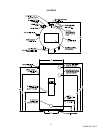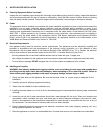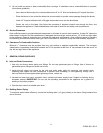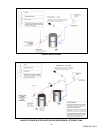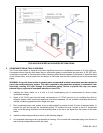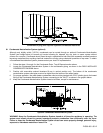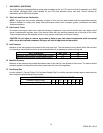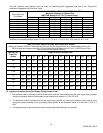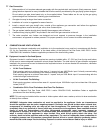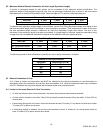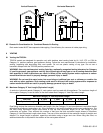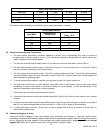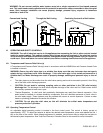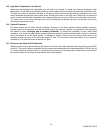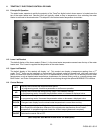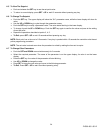17
PV500-45U 06/12
7.7 Gas Connection
1. Safe operation of unit requires adequate gas supply with the required static and dynamic (flow) pressures. Actual
piping selection depends on many variables that must be carefully considered by the gas piping system designer.
Do not select gas pipe sizes based only on the supplied tables. These tables are for use by the gas piping
system designer as a reference in checking pipe size selections.
2. Gas pipe size may be larger than heater connection.
3. Installation of a union is suggested for ease of service.
4. Install a manual main gas shutoff valve, outside of the appliance gas connection and before the appliance
provided appliance manual shutoff gas valve, when Codes require.
5. The gas system installer should clearly identify the emergency shut-off device.
6. A sediment trap (drip leg) MUST be provided in the inlet of the gas connection to the unit.
7. The code compliant vent limiters are designed and must respond to pressure changes in the installation
environment, as opposed to outdoor pressure. For proper operation, do not connect to outdoor atmosphere.
8 COMBUSTION AND VENTILATION AIR
Provisions for adequate combustion and ventilation air to the mechanical room must be in accordance with Section
5.3 “Air for Combustion and Ventilation” of the latest edition of the National Fuel Gas Code, ANSI Z223.1 and/or
CAN/CSA B149, Installation Codes or applicable provisions of the local building codes.
8.1 Equipment Located In Confined Spaces
Equipment located in confined spaces requires two openings installed within 12” (30.5 cm) from the top and bottom
of the room to assure adequate combustion air and proper ventilation. The total input of all gas utilization equipment
installed in the room must be used to determine the required minimum air volume needed for combustion, ventilation
and dilution of flue gasses.
All Air From Outdoors:
Each opening requires a minimum free area of 1 square inch
per 4000 Btu/hr input if directly communicating
with the outdoors or communicating to the outdoors through vertical ducts.
Each opening requires a minimum free area of 1 square inch
per 2000 Btu/hr input if communicating with the
outdoors through horizontal ducts.
All Air From Inside The Building:
Each opening requires a minimum free area of 1 square inch
per 1000 Btu/hr input, but not less than 100 square
inches (0.06 m
2)
.
Combination Of Air From The Indoors And From The Outdoors:
Refer to National Fuel Gas Code, ANSI Z223.1 and/or CAN/CSA B149, Installation Codes or applicable
provisions of the local building codes.
NOTE: This unit may be installed with a remote air intake system which uses a make-up air duct to draw combustion
air directly from outdoors.
WARNING: Adequate clean combustion air must be provided to the appliance. Under no circumstances
should the appliance ever be under a negative pressure. Particular care should be taken when exhaust fans,
compressors, air handling units, etc. may rob air from the appliance. The combustion air supply must be
completely free of any chemical or fumes, which may be corrosive to the appliance. Some common chemical
fumes to avoid are fluorocarbons and other halogenated compounds, most commonly present as
refrigerants or solvents, such as Freon, trichloroethylene, perchlorethylene, chlorine, etc. These chemicals,
when in contact with the equipment or when burned, form acids which quickly attack the tubes, flue
collector, stack and other appliance and auxiliary equipment. The result of inadequate clean combustion air
or negative pressure can be premature unwarranted product failure or unsafe operation producing carbon
monoxide that could escape into the building. Exposure to carbon monoxide can lead to injury or death.



